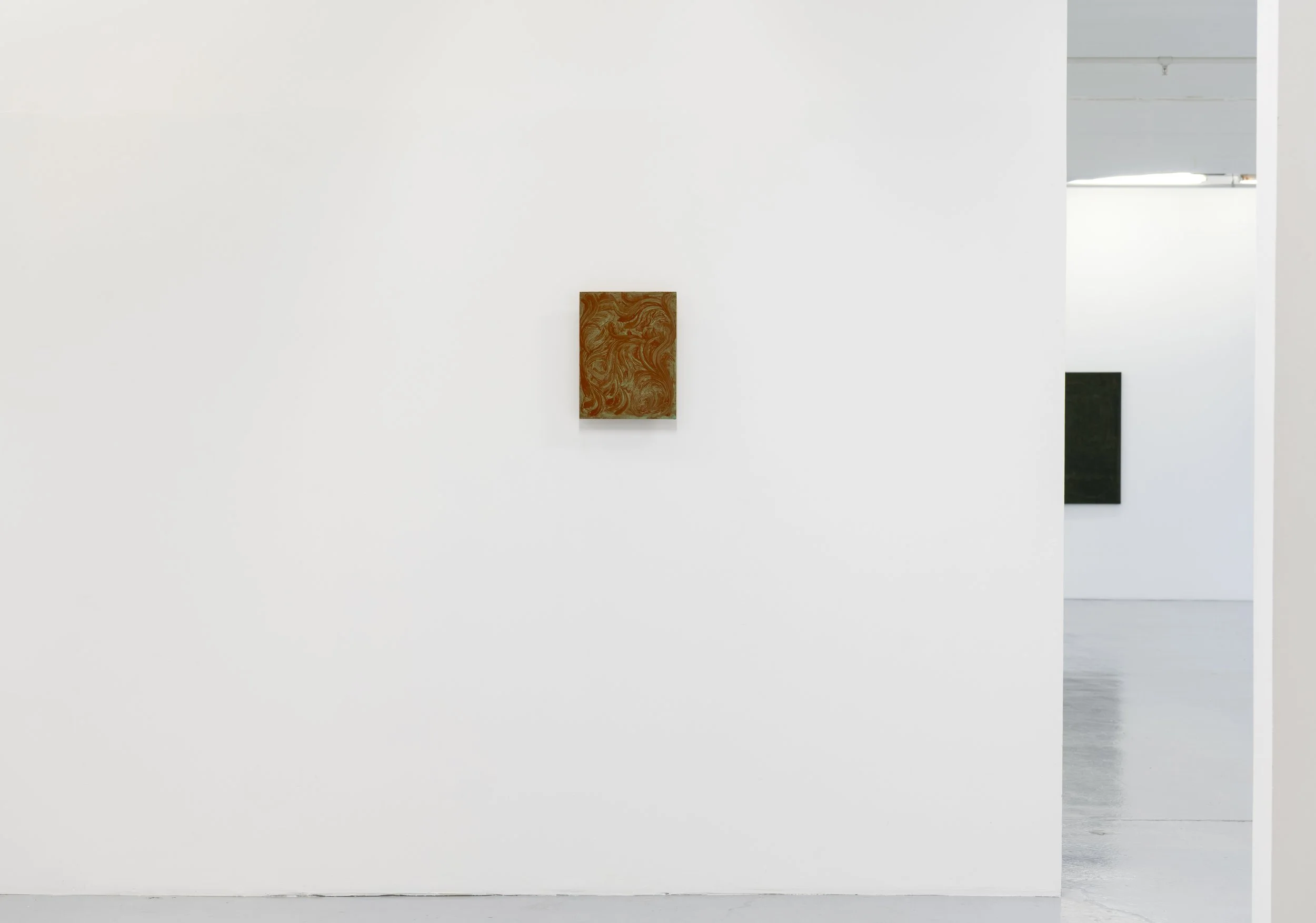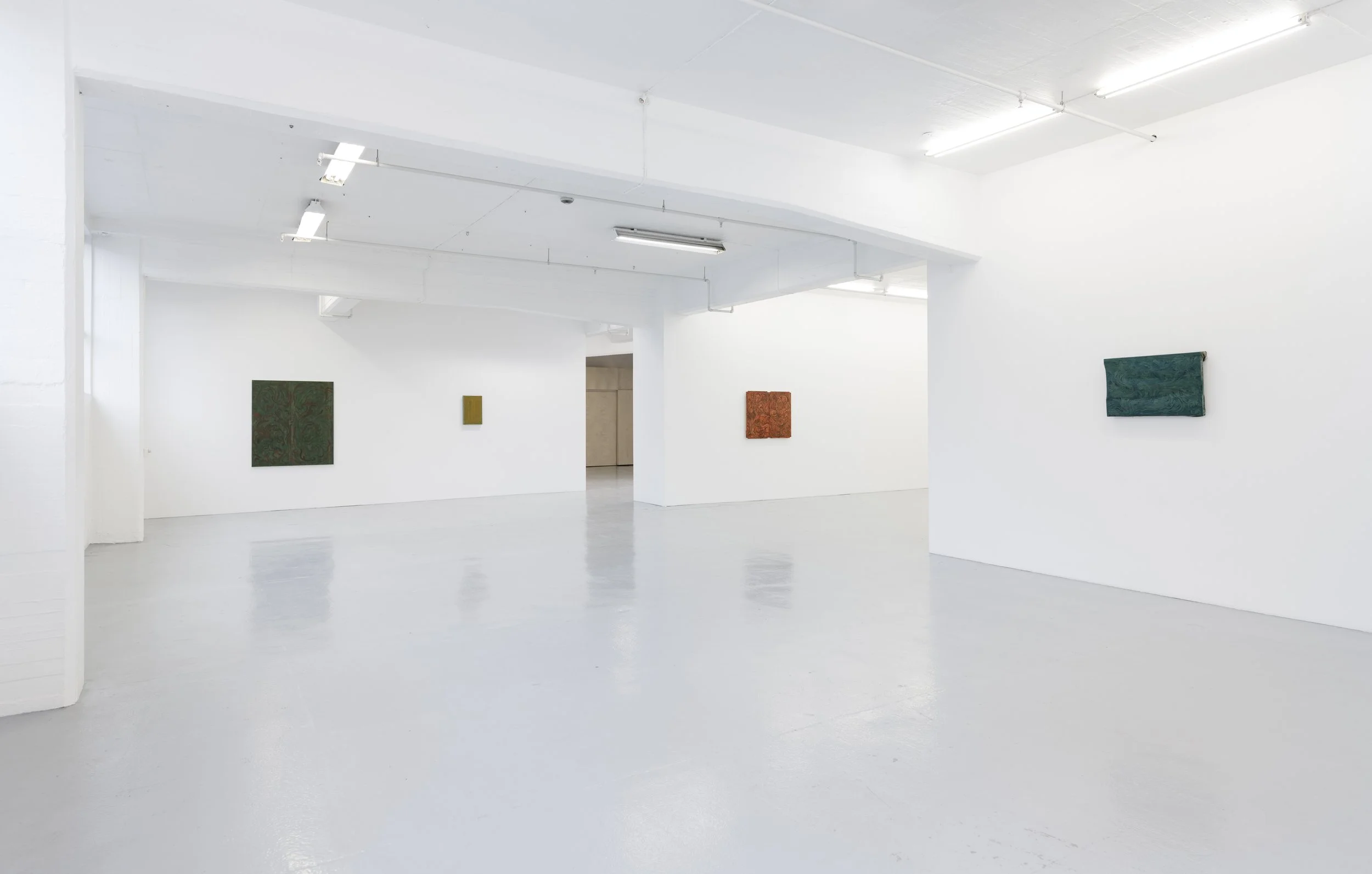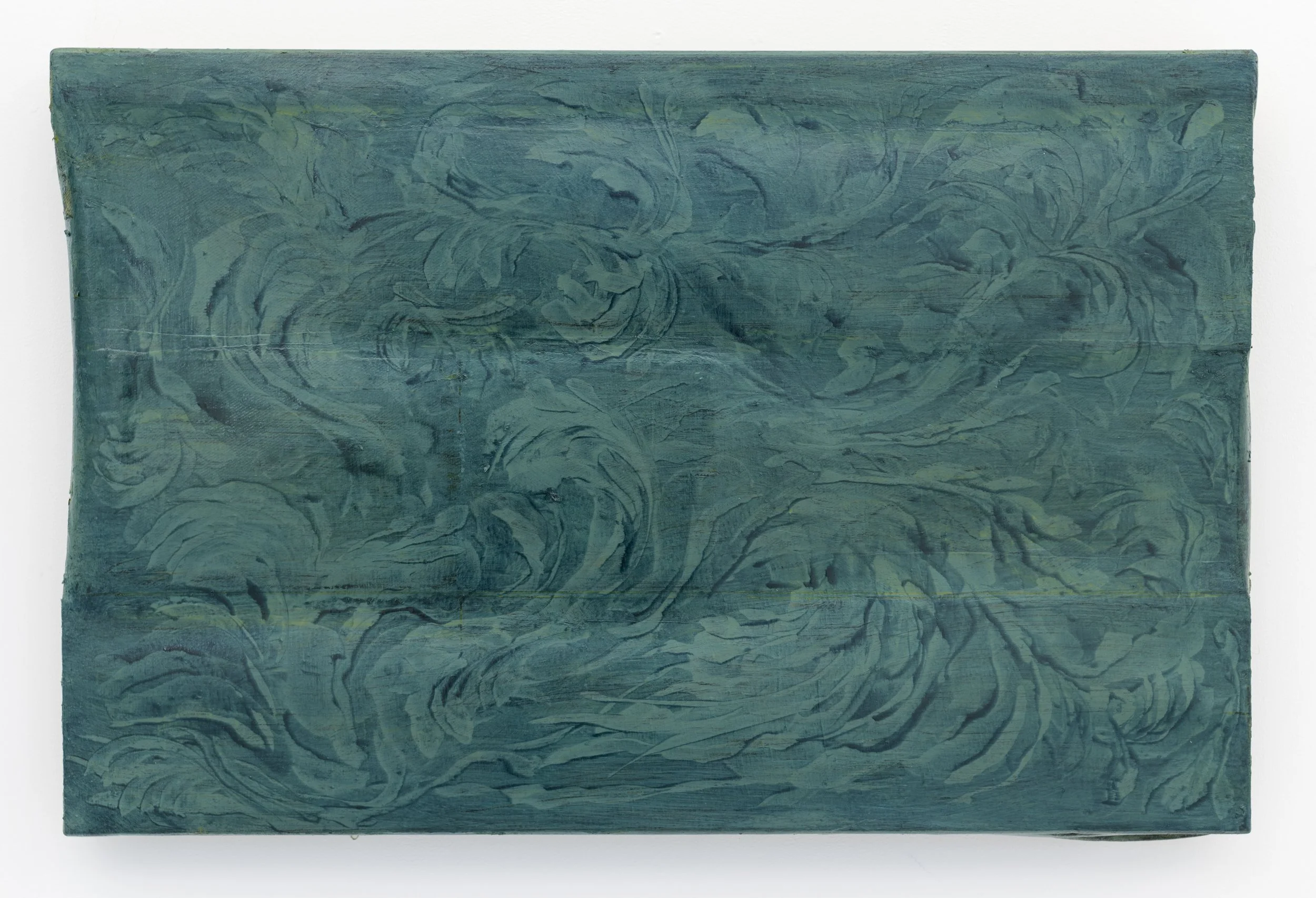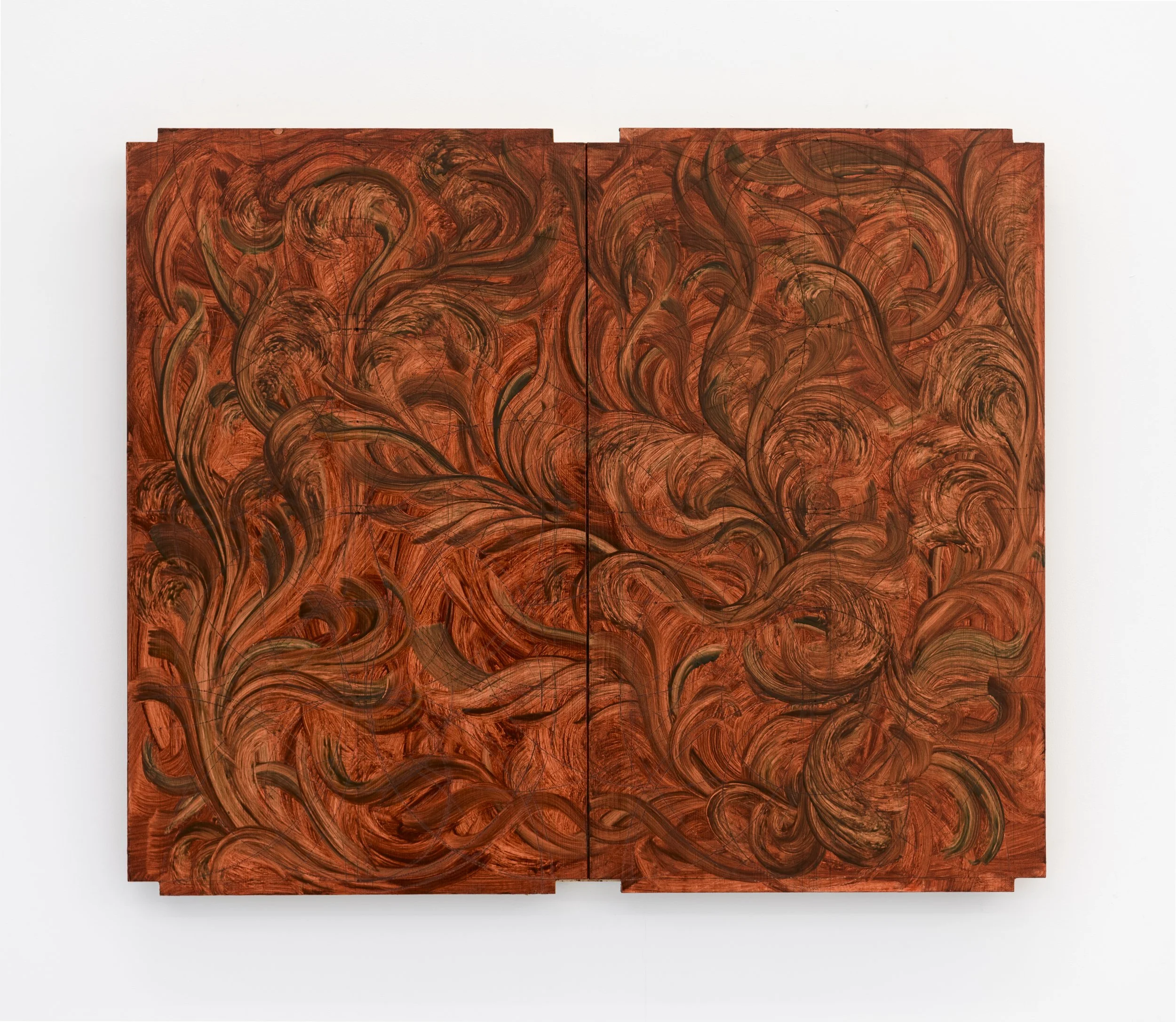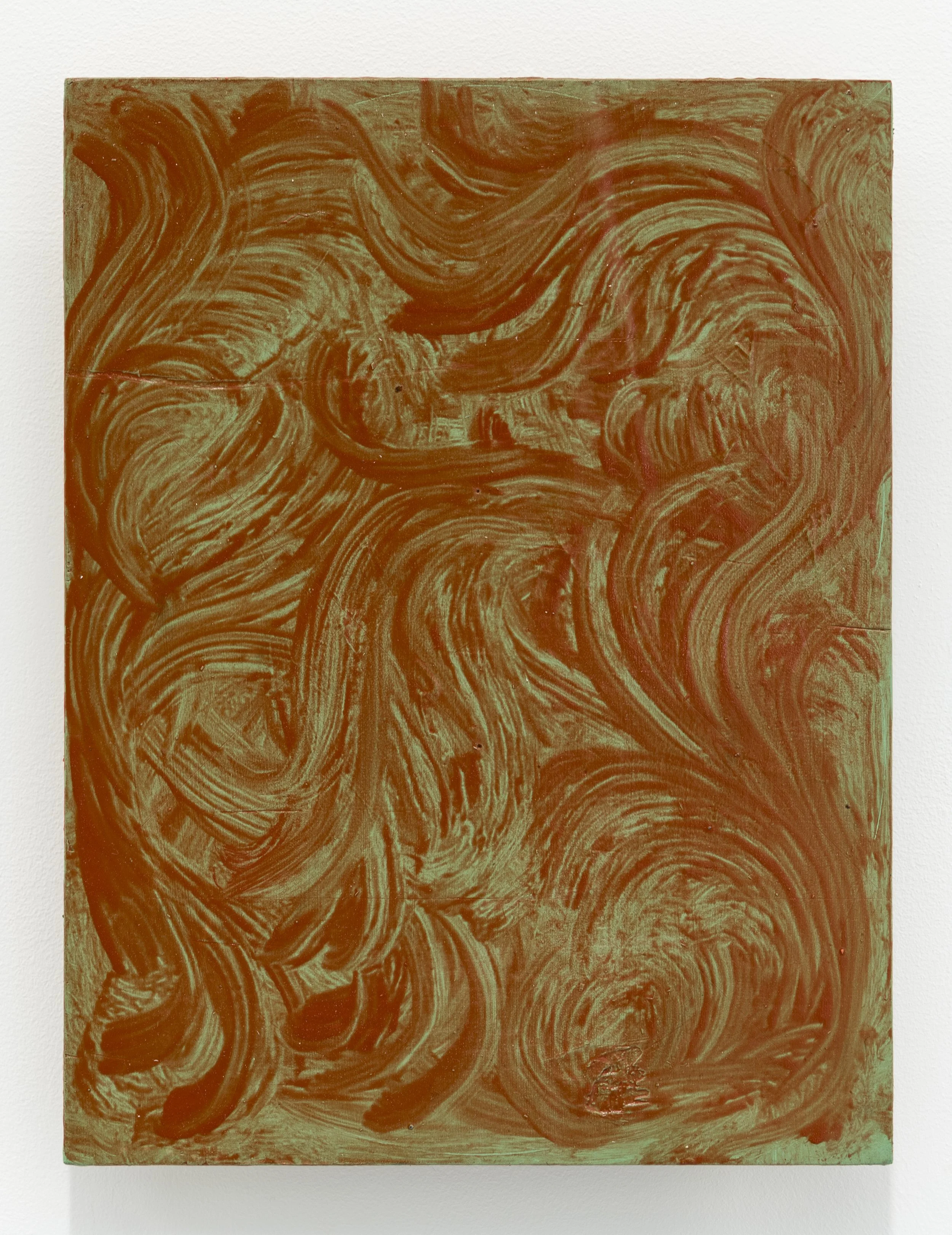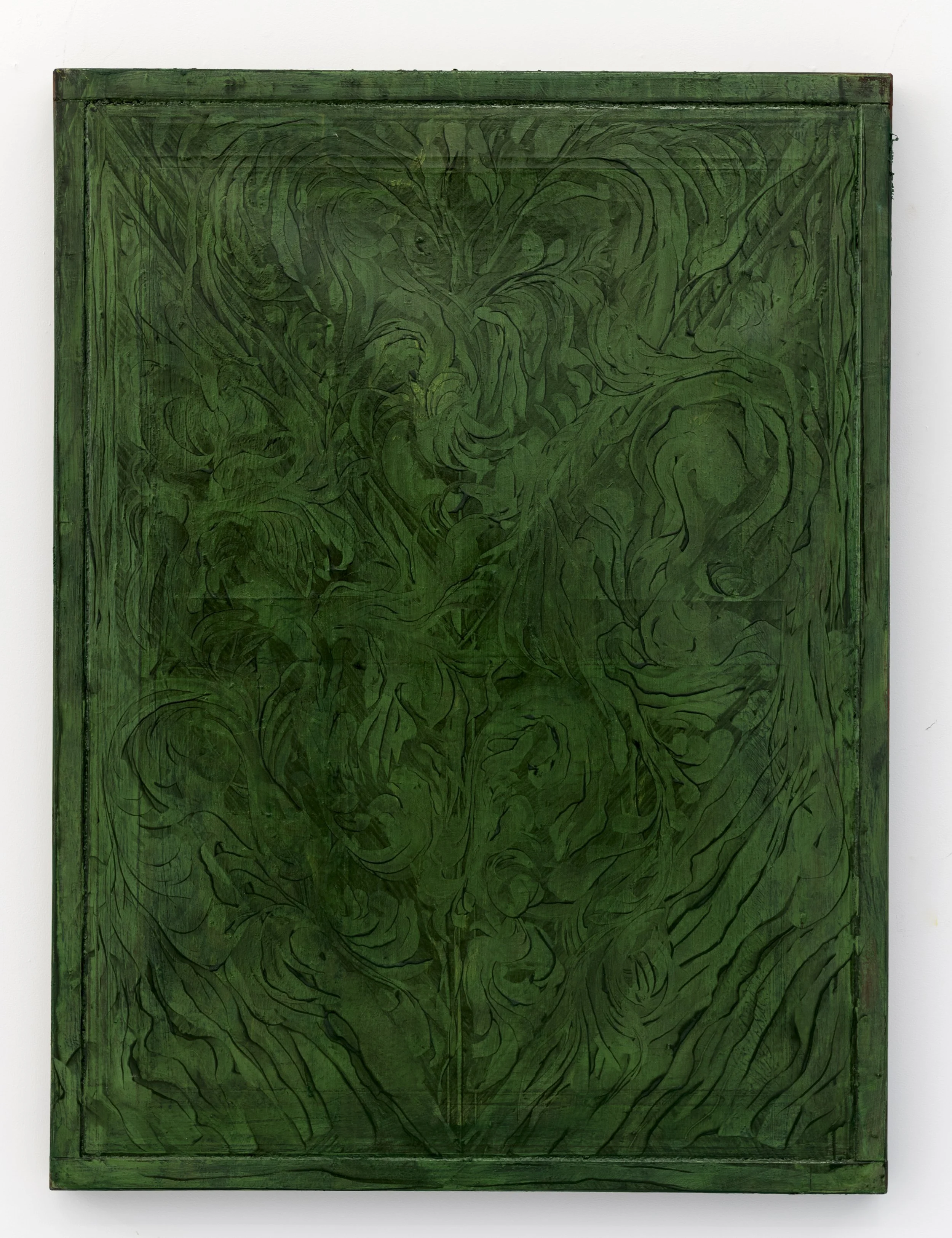Svalroser
Galleri Opdahl, Stavanger, 2024
Gallery press release
The motifs of Olve Sande’s Svalroser, the second series of works created after the artist’s three-year break from art-making do not neatly dovetail with his pre-sabbatical practice. Sande’s former preference for construction materials and precision tools have been replaced by ornate foliage referencing the Norwegian craft tradition of rose-painting (rosemaling). Rejection of ornamentality is here supplanted by the arch-ornament of the acanthus. As Hal Foster has pointed out, the recent comeback of the aesthetic and, quoting Saidiya Hartman, ‘proclivity for the baroque’ in contemporary painting, seems to indicate precisely a desire to escape from those dominant postconceptual or hypercritical modes of production that had been prone to give its practitioner’s painter’s block. A trend which might be mapped onto the familiar dualism of Apollonian and Dionysian aesthetics as a shift in balance from the former to the latter.
Yet shifts are never as unidirectional or as radical as they may at first appear. And indeed, those acquainted with Sande’s practice will notice that Svalroser confronts many of the same problems addressed in his earlier, more overtly postconceptual works: The intersection between art and architecture, the mediation between picture plane and pictorial support, and a stubborn refusal to distinguish between art-making and other forms of work. As such, the new series marks less of a return to tradition than a displacement of postconceptual problems onto the terrain of rose-painting, and it is perhaps in this convergence between ‘old’ problems and their ‘new’ aesthetic scheme that these works are best approximated.
Let us clarify this point by recapitulating some of the basics of rose-painting. The practice was developed in rural regions by Scandinavian farmers and craftspeople in the 18th and 19th centuries, who translated acanthus-ornaments encountered in churches and rococo art into a vernacular style of decorative painting. It is painted directly onto craft objects and the interior surfaces of buildings rather than purpose-built supports. As opposed to rocaille, which is preprogrammed in the architectural blueprint or furniture design, rose-painting is applied afterthe construction of its ground and, therefore, responds to and transforms it. And although it cites the rocaille’s curvilinear c- and s-scrolls, its root systems, flowers and vines, its syntax is necessarily more flexible because it must be ready to react to the quirks and imperfections of what it is painted on. For the rose-painter is forever at the mercy of their unruly and imperfect pictorial support: cracks in the wood, the uneven framework of a cupboard, the undulating walls of a log cabin, curved bowls, protruding nails, and so on.
Rose-painters would thus have been confronted with the material site of painting long before the modernist’s heightened sensitivity of the picture plane or Frank Stella’s realization that, in the words of Michael Fried, ‘literal shape determines the structure of the entire painting.’ If rose-painting is contingent on affirming its site by actively working with and through it—the building’s interior, the use-object, the piece of furniture—it becomes the perfect mode of work for Sande to explore one of the principal themes in his earlier work, namely the notion of a site-specific painting (a topic which the artist notably also explored in his 2022 architectural diploma thesis ‘between painting and site’). In the Svalroser works, flaps of excess canvas protrude from the sides, some are painted on reused wooden panels with visible nail holes. In others, the stretcher becomes an integral part of the picture plane. The elaborate attention given to these materials in these works affirm them as the site of painting, its proper home, so to speak. To put it differently, rose-painting and Sande’s adoption of its logic are matters of dwelling: to make a thing one’s own, or to turn a place into a home by way of reimagining, or literally re-imaging its surfaces. For the Svalroser do not merely cite or refer to the practice of rose-painting, nor are they one-to-one counterfeits (even laypeople would be unlikely to confuse his rose-paintings with the real thing). Sande bends its rules, makes its syntax his own. He comes, in other words, to dwell in it.
As the title of the exhibition informs us, Sande’s roses dwell in the svalgang: the sheltered exterior gallery of traditional Norwegian timber houses and stave churches that mediates between the outside and inside of the building. Similarly, the Svalroser works mediate between postconceptual problems and baroque exuberance; materiality and pictorial illusion; painting’s past and current historical forms. And most importantly, it is at this threshold where the artist has found a room where it is again possible, after conceptual burnout, to work.
Text by Gustav Greger Elgin
Image rights: Galleri Opdahl
